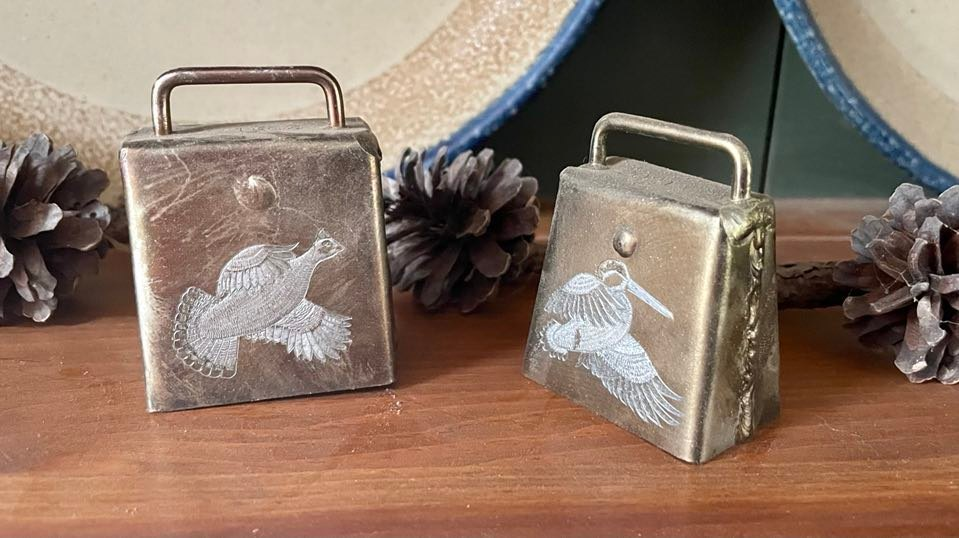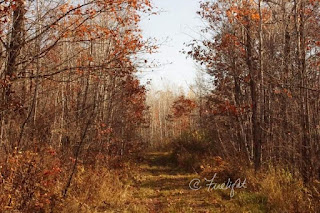by Randy Lawrence
When our bobwhite quail staged a mini-comeback in the mid 1990's, my friend Tom's family owned the most prosperous hometown bank in southeastern Ohio. Tom's dad and grandfather had always had English setters, good ones. They'd even done some horseback field trialing up on the Kildeer Plains back in the day.
All that was before the great blizzards ravaged Ohio's bobwhite quail and pheasants. Tom's people, being hard-bitten, bottom line guys, thought coal country grouse hunting was far too much hard hiking for not nearly enough shooting. The setters got old, pacing in their posh runs. When the last of those dogs died, the kennels stayed empty.
But Tom's family still moved in gun dog circles, including the fellow who owned the hardware store. He had campaigned one great dog to two National Bird Dog Championships in the late '80's. At breakfast in the town diner, he had backed the local scuttlebutt about there being a few quail around. That's when Tom gave me a call.
His dad's birthday was approaching. For the occasion, Tom had lined up permission with several local farmers and wondered if my dogs and I would be willing to join them for the Saturday morning hunt his dad thought they "might could" spare from making money.
I remember the one covey find. It was on the second farm we hunted, a delicious rolling tangle of overgrown pasture, one small woodlot, and a swath of scraggly field corn that had yet to be picked. Tom's dad had laid out our line of march, and we swung into the light November breeze.
The day had long gone off the rails. At the tailgate before the first hunt, Tom's dad learned that my dogs lived with me in my home, sparking a lecture on soft house dogs who "can't smell their own butt." In the field, I spent most of the morning staring down the careless gun barrels of both companions. That's why when Riley finally went solid and setter Dusk slid to a hot back, I stayed with the dogs, waving father and son on to flush.
A good bevy of birds buzzed out of a multiflora rose spread, and there was a lot of shooting. Tom emptied both barrels of his over under before the quail had barely cleared the brush, while his father pumped a svelte Model 42 like he was working it for a late mortgage payment.
Tom's dad thumbed more shells into the .410's magazine. He said he had a line on some singles, but was convinced he'd dropped at least one bird. To his disgust, Riley and Dusk snuffled and scoured until they were just as convinced that he had not. I sided with my dogs and urged them on.
Within minutes, a single got up in front of a Dusk point before I could hustle Tom into position. We kept pushing, and Riley went missing. I finally found the nearly all black pointer crouched into a "Right...THERE" pose on the edge of the woods.
I waited for Tom's dad to step up wide to our left before I walked a fast arc to the right, trying to come back in toward the pointer's nose. On about the sixth heartbeat, a brace of bobwhites clamored up and away through another pump gun fusillade.
We circled back to the truck, where Tom gently checked his father from shoving his loaded shotgun into a soft case for the ride back to town. By then, I'd had quite enough and politely tried to beg off lunch, but Tom said he’d ordered lunch brought in, and that we would eat up in the bank boardroom. There was something there he and his dad wanted to show me.
"Tom tells me you're a gun guy," his dad said. "You're gonna love this."
The room was upstairs, an opulent contrast to the spare, Mayberry-style bank setting - a beautifully appointed room centered with a gorgeous walnut table that matched dark wainscoting, all crafted from trees harvested on Tom's grandfather's farm. What they had wanted to show me was the 1887 Colt lever action shotgun hanging on one wall, the barrel hacksawed short in its role as security weapon for the bank's early days. Tom's dad was taking the gun down for a more personal show-and-tell when my eyes drifted to one of a dozen or so vintage bird dog prints lining the boardroom walls.
I had to step closer to be sure, but there it was. A simply framed, original DuPont Gunpowder Company print of Lady's Count Gladstone from a painting by Edmund Henry Osthaus. The National Field Trial Champion of 1900 is rocked back against scent coming in over her shoulder, the signature "Osthaus Tail" plumed at just above 45 degrees.
Hanging next to her was two-time National Champion Sioux. Count Gladstone, winner of the inaugural national title, was down the way. There was the print of Prince Whitestone and another of Joe Cumming, heirs to the great Llewellin invasion of the late 19th century. The sole pointer portrait in the lot was of Manitoba Rap, the dog who broke the setter stranglehold on the Ames Plantation in 1909. His haunches coiled like an African lion's, muscle and sinew rippling right off the print.
Sioux - National Champion 1901 and 1902
Count Gladstone IV - National Champion 1896
Prince Whitestone - National Champion 1907
I am not sure if the collection hanging upstairs in that backwater bank comprised a complete set of National Champions painted by Osthaus between 1896 and 1910. Tom's dad knew little about what he called "the bird dog pictures," other than his own father had framed the DuPont ads over time and that they were "supposed to be worth something." He had that old Colt repeater over his shoulder, following me as I made my way 'round the room, drinking in one beautiful piece after another. When lunch was wheeled in, I reluctantly sat down to eat.
Joe Cumming - National Champion 1899
Manitoba Rap - National Champion 1909
I spent the next several weeks reading everything I could find on Edmund Henry Osthaus: German immigrant - teacher, painter, field trial devotee, consummate gun dog man and bird hunter - whose art bankrolled his pursuit of sport, not to mention earned invitations to the finest wild bird shooting over the most acclaimed bird dogs the early 20th century had to offer. His work hung in the salons of folks with names like Vanderbilt, J.P. Morgan, Pierre Lorillard, and of course, Hobart Ames who made his money in Boston and lived out his bird dog passions in Grand Junction, Tennessee.
Osthaus was a charter member of the National Field Trial Association in 1896 and actually judged the National Championship stake in 1898. For many years, he escaped Toledo, Ohio, winters for his own shooting grounds in Florida.
One detail of Osthaus's life has haunted me ever since that forgettable quail hunt chanced into a most unforgettable art exhibit. Osthaus had proudly served as Vice-President of the Continental Field Trial Club until 1917, donating a portrait of the group's annual champion as a coveted prize. But that year, as American doughboys marched off to the Kaiser's War, there was an ugly stateside backlash to all things German. Edmund Osthaus, a naturalized United States citizen, was asked by club members to resign and leave the club.
In his 1990 book "George Bird Evans Introduces," the author shares bits from correspondence with the artist's son Franz. Franz Osthaus writes that the cruelty of his father's ouster from the Continental Club marked "...a rugged period in our lives and it left an indelible impression on me."
But the man who had made his life a work of art quietly kept his faith. According to Franz in a letter to George and Kay Evans, the older Osthaus spent his last years "enjoying an ideal arrangement, painting every morning and shooting quail every afternoon with dear friends and over the dogs he loved...I recall gathering after dinner at the shooting lodge fireplace, with the dogs toasting too, and the endless conversations about field trials, particular dogs and their performance, people, and places."
Franz remembers that his father "shot a Daly and a Remington, both twelve-gauge doubles, and he felt that two shots at a rising covey was definitely enough."
Oh, and one more thing. "My father," Franz Osthaus writes, "refused to shoot with anyone who used a pump gun."
"Generations Have Used DuPont Powder" by Edmund Osthaus. According to George Evans, the model for the boy in the print was Osthaus's son Franz.
PS: My current favorite Osthaus, one that I fancy, without provenance, to be a "self portrait," is the piece below. It is a signed oil that sold at auction in May of 2021. Osthaus would be horrified at the title assigned to the work by the gallery ("Hunter With Spaniels"), but the dancing setter and pointer, larking while the gunner lights his pipe, could not care less. They are going hunting with Their Guy.














































%20JF%20Kernan.jpg)





























